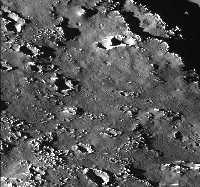This is an image of the surface of Callisto.
Click on image for full size
Image from: NASA's Galileo spacecraft
Does Callisto have a Surface in Motion?
No signs of surface movements have been seen on the surface of Callisto!
The surface of Callisto was carefully examined for signs of the kind of pushing and shoving which the crust of the Earth has undergone through time, and nothing has been found so far.
This type of surface is certainly different from either that ofGanymede or Europa. (The other major moon of Jupiter, Io has many volcanoes.)
The difference may have to do with the lack of heat inside of Callisto.
You might also be interested in:
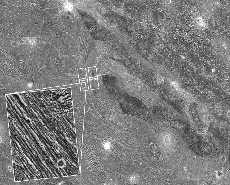
There has been no icy volcanism on Ganymede, nor continental drift, but it does seem that there have been movements of the surface. Examination of the surface of Ganymede reveals many kinds of faulting.
...more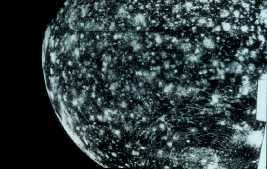
The surface of Callisto is deeply marked with craters. Craters are the little white marks in the picture. It looks like it might be the most heavily cratered body in the whole solar system. And some of
...more
Amalthea was discovered by E Barnard in 1872. Of the 17 moons it is the 3rd closest to Jupiter. Amalthea is about the size of a county or small state. Amalthea is named after the goat in Greek mythology
...more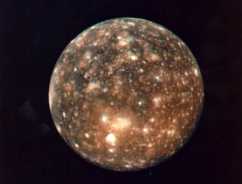
Callisto was first discovered by Galileo in 1610. It is the 2nd largest moon in the solar system, and is larger than the Earth's moon. It is about as big as the distance across the United States. Callisto
...more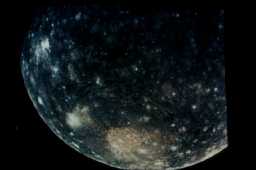
Measurements by the Galileo spacecraft have been shown that Callisto is the same inside from the center to the surface. This means that Callisto does not have a core at the center. This means that, unlike
...more
Many different types of surface are shown in this picture. In the front is a huge crater, which goes for a long way over the surface. This crater could be compared to that of Mimas. They both show that
...more
Europa was first discovered by Galileo in 1610, making it one of the Galilean Satellites. It is Jupiter's 4th largest moon, 670,900 km ( miles) from Jupiter. Europa's diameter is about half the distance
...more


